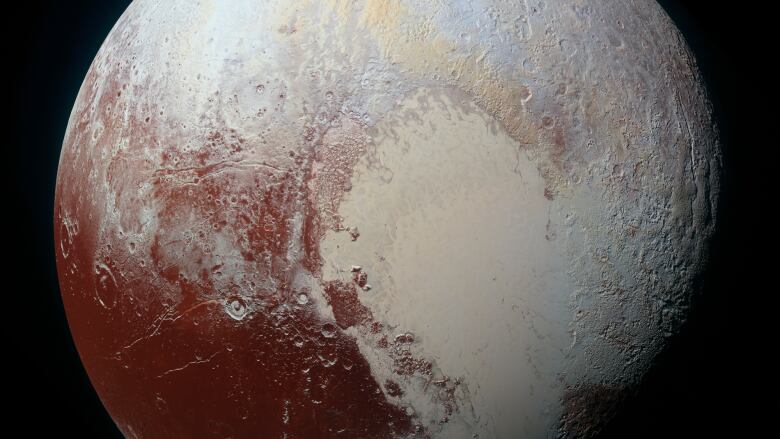Pluto's heart of ice might be a sinkhole
Deep, icy basin in Pluto's heart-shaped region may be a natural sinkhole

The deep icy basin in Pluto's heart-shaped region may be a natural sinkhole.
In a study published Wednesday, a team led by University of Maryland astronomer Douglas Hamilton suggests the basin may have resulted from the weight of surface ice.
- NASA picks Pluto spacecraft New Horizons' latest destination
- Beyond Pluto: 5 things left to explore in our solar system
Computer modelling by the researchers indicates an ice cap formed at that location early in Pluto's history. All that ice may have caused the underlying crust to slump, creating the 966-kilometre-wide basin in the left lobe of the heart, now called Sputnik Planitia. Other models point to a crater caused by an impact.
"Pluto's big heart weighs heavily on the small planet, leading inevitably to depression," Hamilton said in a statement. He noted that the Greenland Ice Sheet on Earth created a basin in similar manner.
NASA's New Horizons spacecraft unveiled Pluto during last year's historic flyby.
Two weeks ago, another study in the same journal, Nature, suggested an ocean beneath Sputnik Planitia, named after Earth's first man-made satellite. Hamilton said that still could be the case.
"While we cannot conclude definitively that there is an ocean under Pluto's icy shell, we also cannot state that there is not one," Hamilton said.
Launched in 2006, New Horizons is now more than 600 million kilometres from Pluto and en route to another, much smaller object in the so-called Kuiper Belt on the frozen fringes of the solar system.That close encounter is set for 2019.












_(720p).jpg)


 OFFICIAL HD MUSIC VIDEO.jpg)
.jpg)



























































































